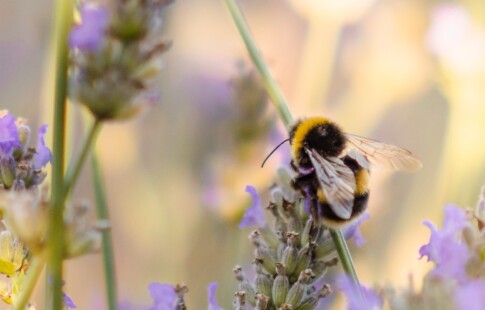
Do Plants Have Feelings?
We are reader-supported. When you buy through links on our site, we may earn affiliate commission.
Picture yourself in a forest surrounded by trees, wildflowers and vines. The scene is peaceful and calm. Yet, some scientists believe plants communicate in their own way and come up with defense strategies to protect themselves from invaders–human or animal. How aware is vegetation of the outside world? Do plants have feelings?
The question seems whimsical to some people but it’s a hot topic in botany and environmental science today. As a growing body of research grows in botany and environmental science, experts now believe rooted creations may be more complex than first imagined.
Defining Feelings
Before answering whether plants have feelings, one must understand what the term means. For animals, feelings connect to the nervous system, the brain and the ability to process stimuli like hot, cold, pain and danger. Since plants don’t contain a brain or nerves, one could argue they can’t have physical feelings. However, they can still communicate and react to external stimuli.
You might be surprised to learn that plants respond to the environment around them, especially when being attacked. People always knew they seek sunlight, moving toward it subtly. However, plants can also release chemicals when attacked and speak to one another via airborne signals and underground fungal networks.
How Plants Communicate
Can vegetation talk and understand what other species are saying? Yes, and no.
VOCS
Plants respond to stresses by releasing volatile organic compounds (VOCs). Studies show over 1,000 plant-emitted VOCs exist and florals often release them continuously to attract pollinators and detract florivores. Interestingly, nearby plants respond to the VOCs and initiate their own defenses to avoid damage, showing some communication exists between greenery.
Trees release VOCs when under stress, which can signal to neighboring trees to initiate a defense mechanism to protect the plant. The VOCs serve as an alert system in these instances.
Some plants produce phytochemicals that can cause distress in humans and animals. At times, it serves as a defense mechanism for the fauna. Although most plants won’t harm humans, there are some that produce toxins and should be avoided. Poison ivy is one example that can cause skin rashes and blisters.
Imagine a forest where a deer comes up to a tree and starts munching on it. The tree responds to the damage by producing more VOCs and releasing them into the air. Nearby trees mount a defense by increasing tannins or other bad tasting chemicals into the leaves. The deer may not like to eat them because the taste is now bitter.
Sounds
Scientists know that tomato plants produce ultrasonic sounds when under stress. The high-frequency noises they emit are out of the range of human hearing but some animals and recording equipment can hear them. If a plant is dehydrated or injured, the sounds grow louder and more demanding.
In studies conducted by Lilach Hadany and other professors, plants emit sounds that tell other plants about the type of vegetation they are and their condition. They may show altered phenotypes, with changes in color, smell and shape but now researchers are proving they also produce sounds to signal distress. The mean peak sound intensity of a drought-stressed plant was 61.6 ± 0.1 dBSPL for tomato plants. The team also researched tobacco plants.
Vibrations
Plants also may respond to specific frequencies, such as the buzz of the wings of a preferred pollinator. In the famous book “The Secret Life of Plants” by Peter Tompkins and Christopher Bird, the men shared experiments they conducted through talking to plants and playing music for them. People at the time laughed over the idea of do plants have feelings, but today scientists are reconsidering the concept.
Plants may not have conscious thought but they do react to light, moisture and environmental stressors. How does a Venus Fly Trap know the exact moment a fly moves into its range? We know they at least respond to stimuli.
Some scientists believe they respond to the sounds of underground water acoustics, with the roots seeking out the source of moisture in the soil and growing in that direction.
The world loses about 10 million hectares annually to deforestation. Do plants know what is happening when they are destroyed en masse? Do the VOCs they release impact the animals and other plants left behind in ways we aren’t yet aware of?
Do Plants Have Feelings and Memories?
Even farther back than the 1970s, a scientist named Jagadish Chandra Bose proved in 1902 that plants feel sensations. Some reactions are instantaneous, such as the Venus fly trap and the touch-me-not, which folds its leaves if touched. He proved plants respond to poison, fertilizers, light and wireless waves with a tool he invented called the crescograph.
In another study, plants showed they can remember past stimuli and whether it is dangerous. In 2007, using the Mimosa pudica, researcher Monica Gagliano conducted an experiment in habituation. Typically, the Mimosa pudica closes its leaves to stimuli to protect itself. In the experiment, Gagliano dropped the plants over and over without harming them. With time, the plants stopped closing their leaves, showing they’d learned drops weren’t dangerous. The experiment left scientists wondering if flora and fauna remembers and shows learned behavior.
Gagliano argued that plants make decisions using a primitive form of consciousness, but others in the scientific community contest this and say that plants are capable of some level of assessment and response.
Should Plants Be Treated Differently?
Knowing that plants have feelings and assessing what that means from an ethical standpoint is a conundrum. If plants sense danger, remember it and respond, how should that change the way humans interact with trees, vines and vegetables? With climate change and deforestation impacting ecosystems, simply knowing plant life is complex could help encourage more sustainable practices.
People shouldn’t assign human emotions to plants. Most scientists feel plants are reactive and adaptive but don’t have emotions like joy and grief, which require a neurological response they lack. The better question is whether plants have an awareness and how that should change the way humans behave.
Future researchers and advanced technology may one day prove whether or not plants have feelings. In the meantime, take care of the planet and tread lightly. Small changes can result in significant impact when it comes to the big beautiful planet we all live on.
Share on
Like what you read? Join other Environment.co readers!
Get the latest updates on our planet by subscribing to the Environment.co newsletter!
About the author

Steve Russell
Steve is the Managing Editor of Environment.co and regularly contributes articles related to wildlife, biodiversity, and recycling. His passions include wildlife photography and bird watching.





